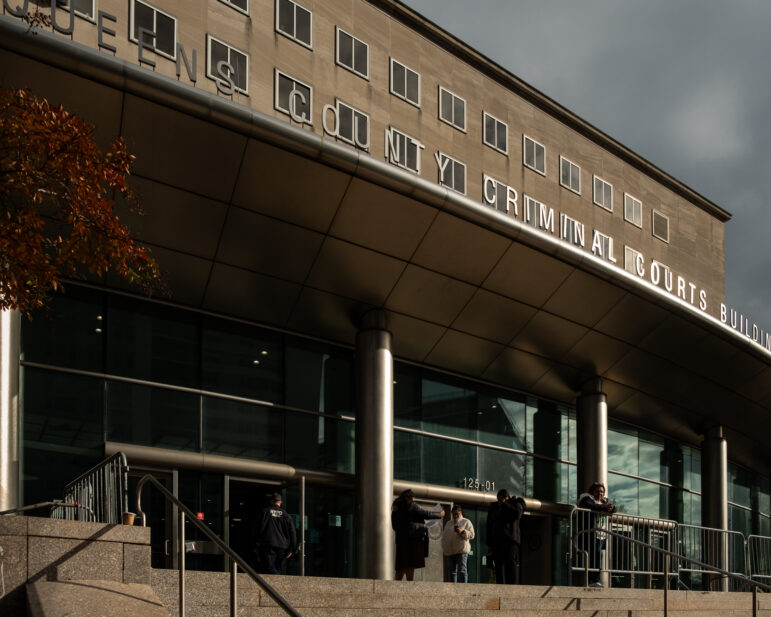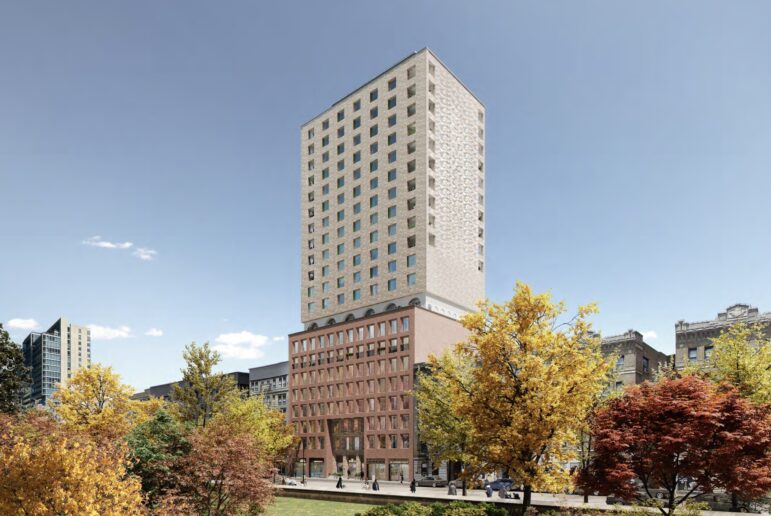Politicians praise it, academics explain its benefits, and parents line up to enroll their kids in it: pre-kindergarten has evolved into everyone’s favorite educational program. Yet 10 years after legislators first set the goal of attaining statewide Universal Pre-Kindergarten, policymakers are hitting serious roadblocks to expanding the program. In New York City, a decentralized enrollment system, along with a tussle between the city and the state over spending rules, could cause the city to forfeit millions of dollars in state pre-K funding – despite strong demand for services.
It wouldn’t be the first time the city missed a chance to expand the popular program, which provides a year of education to all four year-olds, regardless of income level. Last year, the city left some $25 million on the table after failing to meet state pre-K enrollment targets. This year, in the midst of a budget crunch, and with 40,000 families on the waiting list for child-care vouchers, the city is once again struggling to spend all available resources.
One problem is that state money comes with restrictions that make it difficult to use, according to city education officials and child advocates. Over the past two years, the state legislature has boosted universal pre-kindergarten (UPK) funding statewide, with the proviso that it can only be used for half-day programs, which last 2.5 hours. Various studies show that pre-K pays for itself many times over in children’s later educational attainment. The state’s goal is to expand the program to as many four-year-olds as possible.
At the same time, there is growing consensus that a full day of pre-K – the same length as a regular school day, and twice the price of half-day – is more beneficial for children’s development, not to mention the schedules of working parents. Rather than return unused half-day resources to the state, city officials want to create new full-day offerings. “We face a huge constraint in that we don’t have flexibility in how we can spend the funding,” says Maibe Gonzalez-Fuentes, a city Department of Education spokeswoman. “We know that working parents need full-time pre-K. Using funds for half-day only is simply inefficient.”
~
Francis Suazo is a single mom who’s managing to send her daughter to part-time universal pre-kindergarten, at the 1199 Future of America Learning Center in the Fordham area of the Bronx. A former bookkeeper, she took a lower-paying job as a nanny so that she could take her daughter Kiara to a midday UPK session. “My daughter benefits a lot from this program. The school teaches them things I didn’t know four year-olds could learn—they even had a science fair,” says Suazo. “My older child’s preschool, it was more like ‘have a cookie, take a nap.’ Here they’re focused on the child being something in the future.” She thinks a full-day class would be a greater benefit to Kiara—and to parents like her who need to hold down a job.
While the city’s efforts to increase UPK enrollment have stalled—with many available seats left vacant last year – officials contend that greater flexibility would allow them to respond to parental needs. Last year City Council Speaker Christine Quinn lobbied the state to open pre-K funding for full-day programs. Those efforts have gone nowhere; some state leaders are less than sympathetic. “The city didn’t live up to their mandate,” State Senator Carl Kruger told City Limits, a Brooklyn Democrat who chairs the Senate’s Committee on Children and Families. “You should ask the DOE why they’re rattling the tin cup when they weren’t able to spend the money they have.” With the state budget in a tailspin, child advocates worry that any money left on the table this year will disappear for good.
The latest impasse comes on the heels of an aggressive campaign to make publicly funded UPK available to all four-year-olds in the city. New York was one of the first cities to receive state funding for UPK, and has bolstered its program with city earmarks. Last year 54,000 children were enrolled in UPK citywide, almost 60 percent of the entire state enrollment. “We’ve saturated the easy-to-reach children,” says Betty Holcomb, policy director at the local nonprofit Child Care Inc., a local nonprofit that does training and referrals—especially children whose parents are able to accommodate half-day programs.
The rapid expansion of pre-K has created a patchwork of full- and half-day programs. Unlike other states, New York offers UPK in public schools as well as in community-based organizations, or CBOs—nursery schools, daycare centers, etc. Of the 14,000 full-day UPK slots available in New York City, all but a thousand are in the public schools. Most CBOs receive only half-day funding, and some directors extend the day by combining state UPK monies with other sources, such as from the city Administration for Children’s Services and federal Temporary Assistance for Families in Need (TANF). Such “blended funding” models serve low-income families, while those who fall above the poverty line face a market rate of up to $12,000 a year for child care. “That’s the group that gets hit hard,” says Leonard Fennel, director of the Helen Owen Carey Child Development Center in Park Slope, Brooklyn. “For full-day they have the public school option, but the schools are inundated.”
~
Of course, this problem does not extend to the echelon of New Yorkers who can pay college tuition rates for private preschool. And UPK can help defray the costs for middle-class parents by covering 2.5 hours of a full day of care. Still, parents who engage with public pre-K face a fragmented system that can be bewildering to navigate. Public schools had a centralized pre-K application process for the first time this year, but parents who want to send their children to community-based organizations have to visit them individually, filling out reams of paperwork along the way. “You may have one program with open spaces but only offers 2.5 hours, and across the street a waiting list for a full-time program,” says Jorge Saenz de Viteri, director of the Bronx Community College Child Development Center, which serves the children of college students.
With CBOs accounting for more than 60 percent of pre-K enrollment, the inefficiency in connecting kids to spaces may explain why UPK expansion has hit a wall in New York City. Until Oct. 31, when pre-K directors submit their final enrollment numbers, no one knows how many slots remain open in the community-based organizations, nor how many parents are still looking for spaces. That also means that no one knows how much money the city stands to lose this year because of under-enrollment.
Working not to leave UPK seats empty again, Speaker Quinn is coordinating with City Council members, faith-based organizations and unions to alert parents to the general availability of pre-K slots. Still, publicity alone cannot address the fuzzy understanding of pre-K supply and demand. A spokesperson for Quinn said that the City Council and the Department of Education are determining the feasibility of a website where parents can check for current offerings in both public schools and CBOs.
The upshot of the funding and enrollment tangle is that educators are forced to turn away parents who want to send their kids to pre-K. Eventually, the pre-K providers themselves begin to weaken. Bonnie Mallonga, head of the 1199 Future of America Learning Center in Fordham, notes that per-child funding hasn’t changed in years, and that six daycare centers in her area have already shut down. “With these hard economic times, you will lose a lot of community-based organizations. And right now, the public schools cannot house all the four year-olds eligible in the Bronx,” she says. “If you’re a legislator who’s not in touch, you might think there’s extra money floating around. But that’s not the reality on the ground.”







